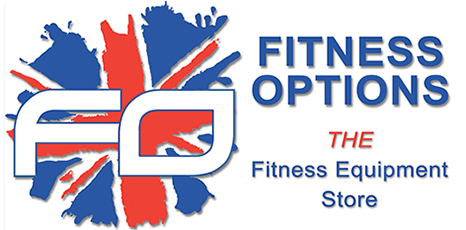
Weight Plates or Discs
These are individual weights designed to fit onto the end of barbells and dumbbell bars. There are two types, standard plates and Olympic plates. Standard plates have a 1’ (2.54cm) hole in the middle of the plate to slide on to a 1” circumference bar. Olympic plates have a 2” (5.08cm) hole designed to fit on a 2” circumference Olympic bar and is bought by the more serious user. Standard plates usually start at 0.5kg and go up to 25 kg in weight and Olympic plates at 1.25kg and rise to 50kg in weight. Some plates now provide additional holes around the edge of the plate as a handgrip to make it easy placing or removing the plate from the bar. Plates are normally made from cast iron but they can be chromed or rubber coated in different colours. Solid rubber plates are also available but these only available in Olympic plates and can be expensive. But solid rubber and rubber coated are quieter to use and protect flooring better.
Training Bars
These are the bars the plates fit onto and come in two diameters to accommodate the two types of plates. There are four main bars, Barbell, Dumbell, Curl and Tricep although there are more specialised bars available. They can be hollow or solid, solid by far being the most popular.
Barbell Bar
These are long bars and come in different lengths from a 4ft aerobic bar right up to 7ft Olympic bars. The longer the bar the more plates you can get on the end. They are used mainly in conjunction with a training bench and are designed for heavier work. The bar you choose will depend on what you want to achieve. Aerobic bars are usually used in classes. For training with a bench you will need a longer bar so that it fits comfortably on the benches barbell rests. If space is limited then a 5ft bar is ideal. However if you are in to more heavy work then a 6ft/6ft 8” standard bar may be required or and Olympic bar. Because Olympic bars are 2” in diameter they are already much heavier than a standard bar and are perfect for the real serious trainer.
Dumbbell Bars
These are much shorter bars, and usually bought in pairs. They range in size from 14” to 18”. Ideal for arm work, although with a little knowledge there are few exercises you cannot do with a pair of dumbbells.
Curl Bar
Specifically designed to work the bicep muscle. It is slightly curved and shaped to fit the hand comfortably and to isolate the bicep muscle.
Tricep Bar
An unusually shaped bar designed to do exactly as it says, work the tricep muscle.
Collars
These are the things that fix the plates to the bar and prevent them from falling off. Some training bars have threaded ends and the collar screws on to it. These are called spinlock bars and collars. They are possibly the safest method and the most popular as once a thread is engaged there is very little likely hood of the collar coming off. However they do have a tendency to loosen slightly and allow the plates to rattle a little. Some manufacturers are now fitting rubber rings to the collar to improve the grip to the plate. Other collars available are spring collars, which are fine for lighter weights and clamp collars for heavy plates.
In addition there are fixed dumbbells and barbells. These are bars with the weights welded to the end. Again in cast iron, chrome or rubber. Gyms usually buy barbells, but dumbbells are very popular in both commercial and home environments. This is probably because they are easy to use and on hand at all times, there is no changing plates over, and when on a stand they can look very attractive. Fixed dumbbells usually go from 1kg right up to 60kg and over.
View our range of free weights & dumbells.
